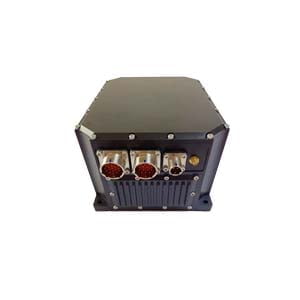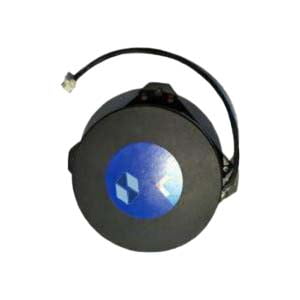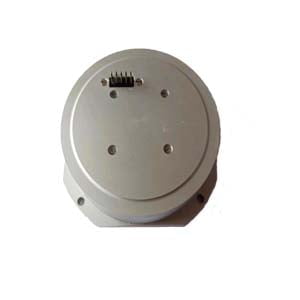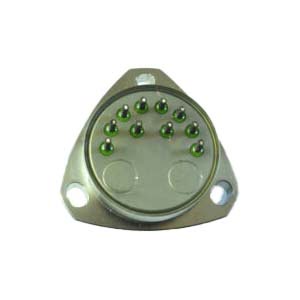Strapdown Inertial Navigation System (SINS) is developed on the basis of platform inertial navigation system. It is a frameless system composed of three gyros, three accelerometers and a microcomputer. The gyroscope and accelerometer are directly attached to the carrier. Gyroscope and accelerometer are used to measure the angular motion information and linear motion information of the carrier respectively, and the on-board computer can calculate the heading, attitude, speed and position of the carrier according to the measurement information. The strapdown inertial navigation system is simple in structure, small in size, light in weight, low in cost, easy in maintenance, high in reliability, and can improve its fault tolerance through redundancy technology.
Fiber optic strapdown inertial navigation system consist of inertial sensitive component of miniaturization (high precision three axis fiber optic gyroscope and high precision quartz flexible accelerometer), high precision I/F conversion circuit, DSP digital signal processor and DC power.
According to this principle,ER-FINS-70 High Performance & Low Cost FOG INS is mainly composed of three solid fiber optic gyroscopes, three quartz flexible accelerometers, data packing plates, body structural parts and related software. It can measure the angular velocity and linear acceleration of the carrier motion,performs the error compensation of temperature, installation misalignment angle, non-linearity and zero position etc. It automatically searches and outputs true north heading and provides three-dimensional attitude,information for carrier attitude and navigation control .The measurement result is output through RS422 serial interface.It can meet the requirements of all-weather full-autonomous three-axis attitude measurement of the carrier and has self-alignment function. It can realize short-term pure inertial navigation and combined navigation functions, and output carrier real-time attitude data.
Advantages of optical fiber inertial navigation system:
- Has parameter binding, normal alignment, rapid alignment, navigation, position correction, parameter calibration, testing, nonvolatile storage, fault detection.
- Integrated display control system and flight parameter recording system provide equipment working state, longitude and latitude, pitch angle, roll angle, heading and navigation parameters of magnetic heading and ground speed, track angle and other related.
- With all-weather capability of autonomous navigation and satellite positioning functions.
Features of optical fiber inertial navigation system:
- Multiple interfaces (DVL, GPS, electromagnetic log and depth sensor).
- Suitable for all underwater vehicles.
- Small size, light weight and high reliability.
- With solid structure, long service life, high starting speed, short response time, large measuring range, wide dynamic range, impact and vibration resistance, chemical corrosion resistance, low cost, measurement and acceleration of gravity independent, simple structure, suitable for mass production.
Fiber optic inertial navigation system gives full play to the advantages of fiber optic gyroscope zero bias stability and quartz accelerometer scale factor stability and axial positioning, ER-FOG-851 low-cost fiber optic gyroscope is specially designed according to the traditional concept of fiber optic gyroscope, using mature fiber optic gyroscope manufacturing technology. It has the characteristics of small size, light weight, low power consumption, fast start, simple operation, easy to use, etc., and is widely used in INS, IMU, positioning system, north finding system and platform stability.
With the breakthrough of the key technology of new inertial devices and their application, the reliability and accuracy of optical fiber strapdown inertial navigation system will be higher and the cost will be lower. At the same time, with the increase of computer capacity and processing speed, the error technology of many inertial devices can be applied, which can further improve the wide application of strapdown inertial navigation system in different fields.
For more information, please feel free to contact info@ericcointernational.com
More Technical Questions
1.What is Inertial Navigation System?
2.MEMS and FOG: How Should you Choose Inertial Navigation System?
3.What is INS and How does it Work?
4.In Autonomous Flight: How Inertial Navigation Systems Work
5.Development and Application of Inertial Navigation System
6.Introduction to Inertial Navigation Systems
Products in Article







